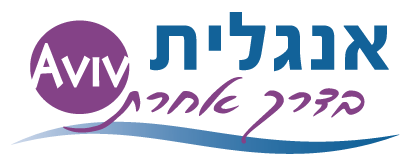
Highway to HOPE
Hope and confidence enhance learning
If you ask an educator
what would be the most important value they can share and transmit their
students in the process of learning, they would probably say encouragement and
motivation. But how can you encourage and motivate a student with language-based
learning difficulties (LBLD)? How can you empower a frustrated student in the
learning process after they have been failing again and again for years? How
would you make them gain the necessary confidence to try again? The answer,
according to my personal experience and perspective, is by providing them with hope. Hope is not a dream. Hope is not
a wish. Hope is the notion that you can achieve a goal based on factual
information and learned experience.
In the words
of Vaclav Havel, “Hope is definitely not the same thing as optimism. It is not
the conviction that something will turn out well, but the certainty that
something makes sense, regardless of how it turns out.” Furthermore, as Brad
Henry expressed so accurately, “A good teacher can inspire hope, ignite the
imagination, and instils the love of learning.”
Funnily, if
you check on google what the meaning of “instill” is, the first example you get
is: It is part of a teacher's job
to instill confidence in/into his or her students. To that I will add that
confidence is built on success and the teacher should make sure he breaks up
the process into small steps and stages to guarantee success.
How many
times in life have we had to face struggles and difficulties, both as teachers
and as learners? Probably many more than we can actually recall. How, then, can
we incorporate hope in the learning equation to achieve successful outcomes?
According to
my own personal experience, there is no other feeling more related to learning
than hope. Whenever I meet a student with LBLD who has been facing frustration
and struggles for a long time, my number one priority is to show him or her
that there is hope, because most of the time, that is exactly what the student
– and his or her parents – has lost. I must help them regain their lost hope
throughout the whole learning process. For an underachieving, discouraged, and
frustrated student, learning English has become an obstacle that seems too
difficult to overcome. Therefore, by not dwelling on their past experiences but
rather moving forward into the new learning mechanism, we can begin the process
of reversing their perception of learning English. That is, we shift English
acquisition from an unachievable to an achievable goal. This is what
the first minutes of every meeting with a new student are about.
In order to
bring the student on board with this “Highway to Hope,” it is essential that I
show them that such hope is realistic. How can this be done? By showing them
that this is not just a dream but a doable and achievable goal, based on
personal experience. It is not an abstract, ungraspable concept. Neither is it
a promise or a dream. It is something real that the students need to experience
by themselves to begin the process of changing their attitude towards learning
English. How do I facilitate this experience? By making the student learn and
retain something new in a very short period of time, and not necessarily
something highly complex. On the contrary, it only takes a simple, but
significant change in the student´s state of knowledge of the English language
to help lay solid ground for factual hope and so, the “shifting paradigm”
process begins in the student’s mind, thus opening the gates of hope for
language learning.
During the
first half of my standard initial meetings, the student introduces himself and
expresses their difficulties and concerns regarding the language. I, therefore,
have little time left to make my point and show the student that he can enhance
his language knowledge. As time is of the essence, I focus on introducing the
student to the different methods I
offer for language learning, methods they have likely never used before. Here
lies the key to regaining hope. We must introduce change and not “more of the same.” We must show the student
different methods, different approaches, different mechanisms of practice and
exercises.
This is an
innovative, unique way of reaching understanding within the English language.
Despite its apparent complexity, the presentation of variety and the
reclamation of hope are achieved in a very short period of time, realistically
no more than 10 minutes. This is another very appealing aspect of the
methodology which helps the student feel motivated and experience positive
results that reinforce his/her confidence and faith in the process.
In only a
short trial of these different methods,
the student gets to experience how
the learning process is going to be different from anything s/he has been
taught before. Hope, therefore, shifts from a mere promise to reality. If s/he
retains the new information, we win our first battle. Yet, how do we make sure this
is achieved? Again, the key is to understand the difficulty and then to adapt
the procedure to the student’s personality, capabilities and needs.
At the end
of this short trial, I always ask the student, “Have you been taught like this
before? Is this way a new way for you? Are these methods, games or books new to
you? If so, I can give you hope.” In my
opinion, hope, as I mentioned before, should be based on facts. If the student
realizes that we are about to start a different process with different methods
than what s/he has previously experienced, s/he can renew his/her sense of hope
based, this time, on self-experience and reality. This is how I provide hope to
every new student I meet. It is crucial, vital, that the student leaves the
lesson with a smile. This sign of confidence is clear proof that the student
has regained hope and will be able to overcome his difficulties.
Obstacles
and learning difficulties always arise in the process of mastering a second
language. My personal aim as a developer of this new teaching and learning
methodology is to help the student find his inner strength, based on his/her
everyday learning achievements. I aim to provide them with hope, which will
enable them to face any difficulty with the belief that there is no such thing
as an unachievable goal, provided they feel confident and keep their hopes
high.
